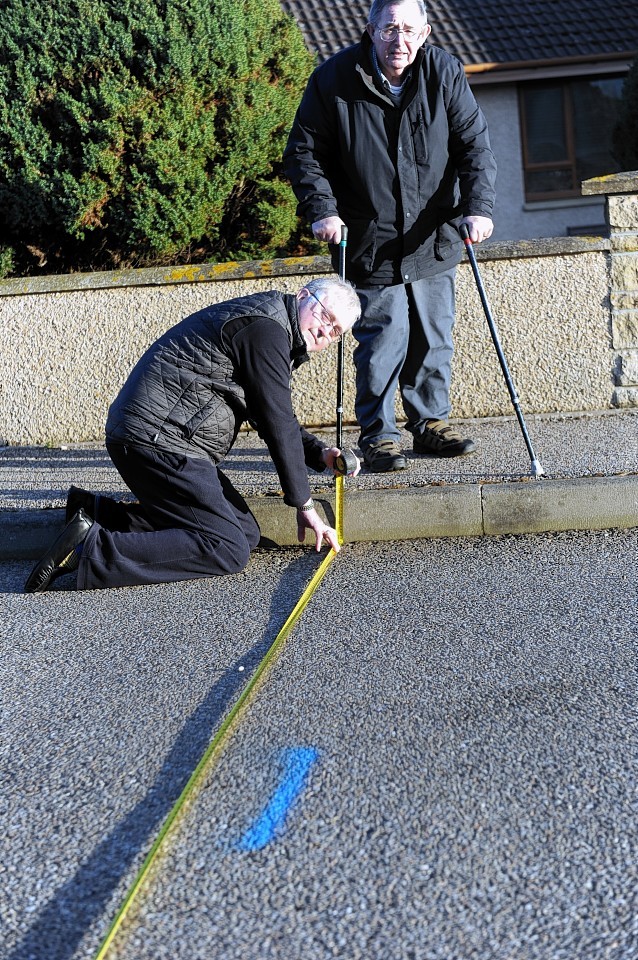Campaigners believe they may have the measure of construction firm in a bitter row over a housing scheme access road.
Tulloch of Cummingston was forced to go back to the drawing board after its initial plan for getting traffic in and out of the 261-home development in Lossiemouth provoked a storm of protest.
But its revised proposals for the project at the town’s Sunbank area are also under fire because the chosen route would mean heavy vehicles passing quiet cul-de-sacs to reach the port’s Boyd Anderson Drive.
But members of a local pressure group believe they have found a way to force the developer into a second rethink.
The Stop the Boyd Anderson Drive (BAD) Access Group claim the carriageway at Halliman Way which the company hopes to incorporate into the route is not wide enough to be used as an access – as it measures only 16.6ft.
They say that, according to legislation, the road would need to be 18ft wide.
One of the group’s most committed campaigners, Robert Murdoch, took to the streets of Lossiemouth with a tape measure get proof the carriageway was not up to scratch.
He said last night: “This is a godsend as it means the developers should not be able to use the road – this should rule it out.
“Using Halliman Way as an access road is completely outwith Moray Council’s plan and now they surely can’t permit this application.
“If developers were to widen that road then there would not be room for a footpath, and this is not how the route is shown on the revised plans.
“It’s totally ouwith the normal standard for roads of this type.
“We accept that there is a need for housing, and are not against the project, but this is a major development for Lossiemouth and to go about it in this way is an utter disgrace.”
But Tulloch of Cummingston believes that although the route is not than the standard width, Moray Council planners should support its proposals.
The Elgin-based firm’s managing director, John Tulloch, said the narrow carriageway could actually be a positive traffic calming measure.
And he said the firm was not to blame for miscalculating the size of the road.
He said: “The ordnance survey map incorrectly showed the road as slightly wider than it actually is.
“But it should still be wide enough for accommodating additional traffic.
“Many modern developments have access roads that narrow down considerably less than the 18ft that is classed as standard.
“This can actually help to calm traffic, as it forces vehicles to adjust their speed – especially when it’s narrowed to such an extent that it prevents movement in one direction.”
The company said it would not undertake any work to widen any access route for use by larger vehicles.
The decision on whether to permit the route on to Boyd Anderson Drive through Halliman Way and Fisher Place will be made by Moray Council.
A council spokesman said: “As with any application, all relevant factors will be taken into consideration in coming to a decision.”
If the access road plans are given approval the Stop the Bad Access Group will examine ways of appealing against the decision.
